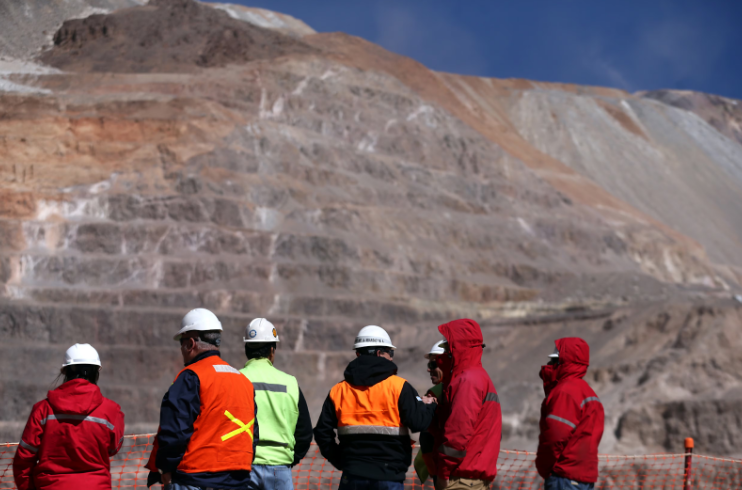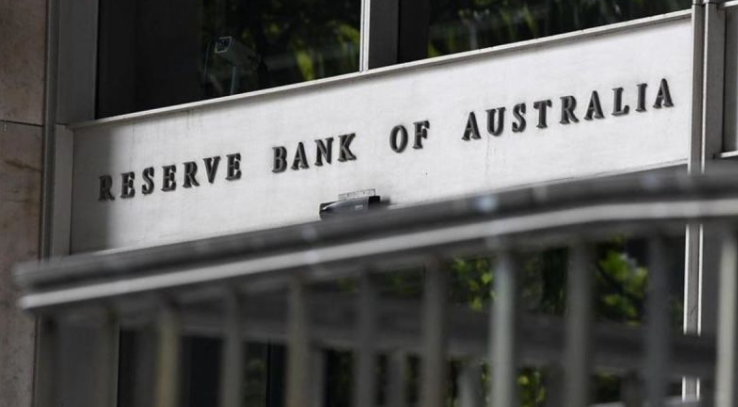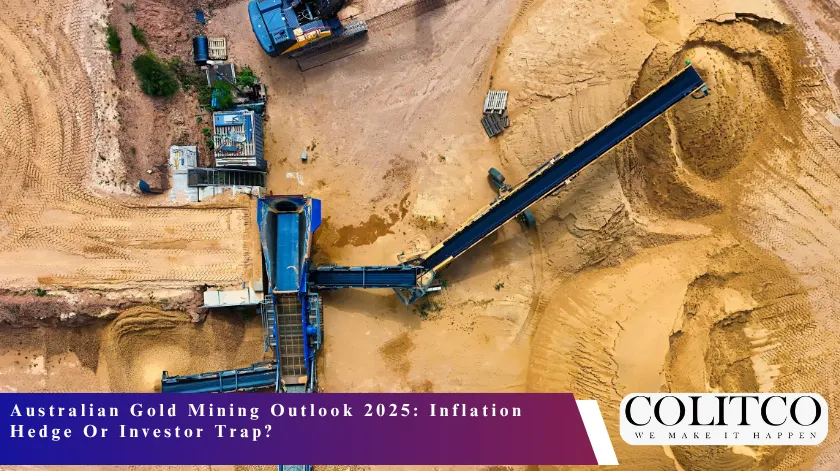Gold traded above 2025 highs, reigniting discussions over the role of the listed gold miners on the ASX. The sudden surge in spot gold occurred due to global market movements as investors pondered whether gold miners would remain sound inflation hedges or become traps for investors in an uncertain situation.
As far as global gold producers go, Australia is one of the top contenders, thereby making this a hot topic of discussion. Australian miners are favoured by geology and governance, but are faced with rising costs and volatile currencies, thereby complicating the investment scenario.

Gold tops 2025 highs, sparking debate on ASX gold miners
What Is Driving The 2025 Gold Rally?
Gold prices were at their highest in history in 2025. As of October 2025, the spot price was close to US$3,859 per ounce. The rally is borne from growing expectations of interest rate cuts in the United States, with rising geopolitical risks acting as a catalyst.
Central banks kept buoying demand by heavy purchases of gold. Investor flows into exchange-traded funds have further supported the market. All these pushed gold equities higher, with Australian miners being some of the prime beneficiaries. For investors, this rally is yet another proof of gold standing tall as a shelter in times of global uncertainties.
Australian Gold Mining Outlook 2025: Price Drivers
Profit margins of Australian gold miners remain healthy from the recent sharp rally in bullion prices across world markets. Gold miners must wrestle with persistent cost pressures, including those from rising fuel costs, labour, and equipment expenses, and yet many of them maintained sound cash flow.
Energy prices have proven to be an intermittent hurdle (especially for Western Australia), but the general strength of gold prices certainly outweighs these. Investors rewarded buyback programs, capital discipline, and dividend stability.
These favour institutional confidence as reflected in the outperformance of ETFs tracking gold miners over global equity indices. Although the running order of bullion miners seems to be that of a favourable outlook, the risks are building quietly underground.

Gold miners face rising costs but sustain strong cash flow
Are ASX Gold Miners Still A Reliable Inflation Hedge?
Gold is traditionally seen as an inflationary hedge, with miners bringing the element of amplified risk. Unlike bullion, miners are affected by operational efficiency and leverage on the gold price. Gains can be extremely rewarding for them during rallies, but losses can be equally punishing when prices reverse. By 2025, investors will remain divided. Some argue
Australian miners still supply reliable protection against inflation, while others highlight their exposure to global shocks. It is necessary to look at every company’s balance sheet, all-in sustaining costs, and plans for growth to assess if miners remain a defensive investment vehicle.
How Do Interest Rates And RBA Policy Affect Miners?
The Reserve Bank of Australia, in its September meeting, decided to hold its cash rate steady at 3.60 per cent. Policymakers cited continuing inflationary pressures and a very tight labour market as reasons to deliver one last pause. The stable rate period was a temporary relief for domestic markets, sustaining sentiment for equities.
Although central bank policy shifts worldwide could have an influence on gold, an immediate shift towards rate cuts will have a depleting effect on gold’s appeal, whereas lingering inflation will accentuate demand. For Australian miners, the policy framework continues to determine financing costs, currency movements, and investor appetite.

RBA keeps cash rate steady at 3.60% in September meeting
Production, Costs And Australian Strengths
Australia remains a world-leading gold producer, furnished with deposits of world-standard and transparent regulatory frameworks for exploration. Major companies listed on ASX had strong earnings in 2025, with higher gold prices boosting profits.
Mid-tier miners improved their margins on account of rising price levels, while junior explorers saw the capital markets gradually opening up after years of transport. Nevertheless, production costs fluctuated considerably across operators. Those companies that managed to keep costs on alum all-in sustaining costs were most highly valued by investors, as investors weighed efficiencies on their decision matrix.
Together with the stable jurisdiction and a talent-prone workforce, this makes a strong argument for the country’s competitive edge in the worldwide scenario of gold production.
Why Investor Caution Remains Warranted
Despite this bullish environment, caution stretches across investors analysing ASX-listed gold stocks. Certain miners now trade at lofty multiples, and these levels will be vulnerable to sharp corrections should gold prices slip lower. Smaller juniors are also at the lay of various increased risks, including resource uncertainty, financing availability, and delays in permitting.
Currency volatility lately has given market players more reason to distract them, especially with Australian-dollar-denominated costs. With investors actively seeking governance standards and capital discipline, inconsistencies in the past have tarnished the sector’s credibility. The big valuations coupled with active operational risks make for a well-diligence-filled journey for any would-be shareholder.
Which ASX Miners Look Resilient?
Large-cap miners with diverse assets and low cost bases seem to stand the test of volatility. The sort tends to be large-cap companies with strong balance sheets and dividend yields, and disciplined expansion.
Mid-tier miners have gained attention and will probably continue to do so, especially to companies with growing production profiles and favourable cost structures. They, thus, provide a balance between growth potential and somewhat low risk as opposed to a junior.
The junior or exploration companies are still there for that more speculative upside, but at least they face issues with financing, development, and execution. Investors should fully appreciate the risks that come with juniors, knowing that their success is very much dependent upon discovery results, the availability of capital, and, finally, regulatory approvals.

Large-cap miners with diverse, low-cost assets withstand market volatility
Market Sentiment And Fund Flows
Investor sentiments towards gold remain bullish, with this event being well attended, pulling in heavy malls and hard volumes in 2025. The Perth Mint saw a surge in gold sales during the month of September, suggesting strong physical demand. Institutional investors have been rotating into bullion-backed ETFs and ASX-listed miners, probably causing rallies in gold equities.
While such flows are signs of confidence, they also pose risks for a swift reversal with the change in sentiment. Sustained investor interest will be dependent on whether the yellow metal can maintain its price levels above current highs. For the time being, demand remains good, providing a valuation and exploration promise for Australian miners.
How Should Investors Approach ASX Gold Stocks Today?
Investors should adopt a disciplined, research-oriented approach when selecting ASX gold miners. Considerations such as balance sheet health, all-in sustaining cost, production outlook, and dividend policies would matter. Diversified allocation across major, mid-tiers, and select junior companies would spread risk while capturing upside.
Investors should also consider the level of exposure to ensure such allocations coincide with their risk profile. While gold is enjoying a recent golden period, sharp reversals cannot be ruled out. Therefore, combining miner exposure with bullion remains a very sensible option for investors seeking growth coupled with defensive portfolio protection.
Also Read: Gold Rush: Australian Mining Stocks Smash Records as Yellow Metal Breaches $5,600
FAQs
Q1: Is gold still a reliable hedge against inflation in 2025?
Yes. Gold continues to serve as an inflation hedge, but miners carry added operational risks.
Q2: Will ASX gold miners continue to rise in value?
They may, if gold remains high. However, individual company performance will determine sustained gains.
Q3: How does RBA policy affect Australian miners?
The RBA rate decisions determine funding cost, currency movements, and investor appetite for risk assets.
Q4: Which miners offer safer investments?
Large-cap producers provide safety through diversification and low all-in sustaining costs.
Q5: Are junior explorers worth considering in 2025?
Yes, but with a higher risk. Their fortunes depend on exploration, funding, and regulatory approvals.
Q6: What external factors could influence gold prices this year?
US Federal Reserve decisions, trends in global inflation, and large-scale buying by central banks are still turning points.
Q7: Should investors combine physical gold with miners?
Many investors go for both as the bullion trade-off is its safety versus the higher upside potential of the miners.












